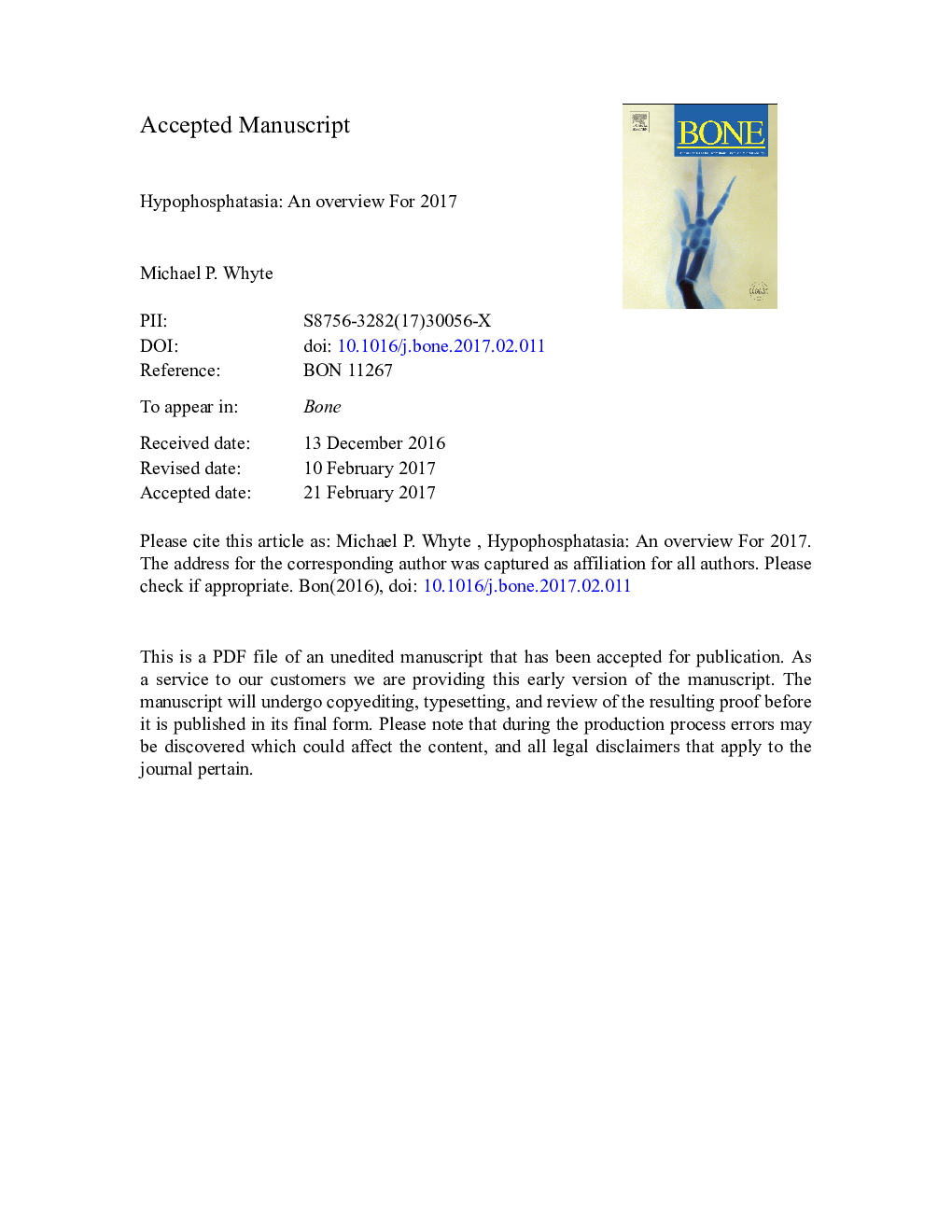| کد مقاله | کد نشریه | سال انتشار | مقاله انگلیسی | نسخه تمام متن |
|---|---|---|---|---|
| 5585309 | 1568117 | 2017 | 49 صفحه PDF | دانلود رایگان |
عنوان انگلیسی مقاله ISI
Hypophosphatasia: An overview For 2017
دانلود مقاله + سفارش ترجمه
دانلود مقاله ISI انگلیسی
رایگان برای ایرانیان
کلمات کلیدی
موضوعات مرتبط
علوم زیستی و بیوفناوری
بیوشیمی، ژنتیک و زیست شناسی مولکولی
زیست شناسی تکاملی
پیش نمایش صفحه اول مقاله

چکیده انگلیسی
Hypophosphatasia (HPP) is the inborn-error-of-metabolism that features low serum alkaline phosphatase (ALP) activity (hypophosphatasemia) caused by loss-of-function mutation(s) of the gene that encodes the tissue-nonspecific isoenzyme of ALP (TNSALP). Autosomal recessive or autosomal dominant inheritance from among >Â 300 TNSALP (ALPL) mutations largely explains HPP's remarkably broad-ranging severity. TNSALP is a cell-surface homodimeric phosphohydrolase richly expressed in the skeleton, liver, kidney, and developing teeth. In HPP, TNSALP substrates accumulate extracellularly. Among them is inorganic pyrophosphate (PPi), a potent inhibitor of mineralization. Superabundance of extracellular PPi explains the hard tissue complications of HPP that feature premature loss of deciduous teeth and often rickets or osteomalacia as well as calcific arthropathies in some affected adults. In infants with severe HPP, blocked entry of minerals into the skeleton can cause hypercalcemia, and insufficient hydrolysis of pyridoxal 5â²-phosphate (PLP), the major circulating form of vitamin B6, can cause pyridoxine-dependent seizures. Elevated circulating PLP is a sensitive and specific biochemical marker for HPP. Also, the TNSALP substrate phosphoethanolamine (PEA) is usually elevated in serum and urine in HPP, though less reliably for diagnosis. Pathognomonic radiographic changes occur in pediatric HPP when the skeletal disease is severe. TNSALP mutation analysis is essential for recurrence risk assessment for HPP in future pregnancies and for prenatal diagnosis. HPP was the final rickets/osteomalacia to have a medical treatment. Now, significant successes using asfotase alfa, a mineral-targeted recombinant TNSALP, are published concerning severely affected newborns, infants, and children. Asfotase alfa was approved by regulatory agencies multinationally in 2015 typically for pediatric-onset HPP.
ناشر
Database: Elsevier - ScienceDirect (ساینس دایرکت)
Journal: Bone - Volume 102, September 2017, Pages 15-25
Journal: Bone - Volume 102, September 2017, Pages 15-25
نویسندگان
Michael P. Whyte,